
- News
- Basics
- Products
- JP Job shop
- Exhibition
- Interview
- Statistic
- PR
- Download
- Special contents
Exhibition
August 1, 2024
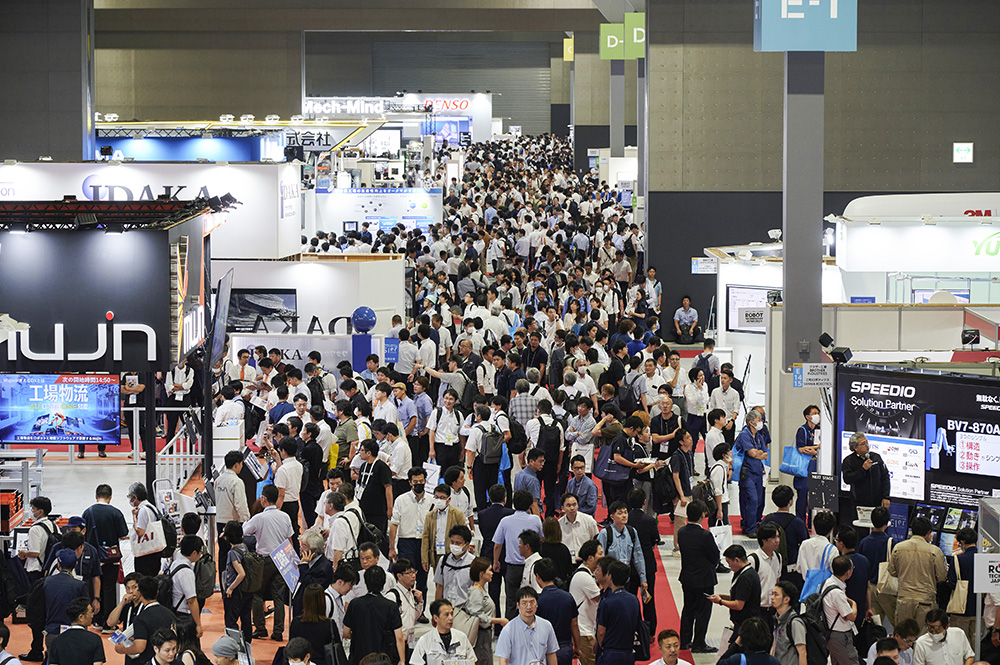
ROBOT TECHNOLOGY JAPAN (RTJ) 2024 was held from July 4 to 6 at the Aichi Sky Expo in Tokoname City, Aichi Prefecture, Japan. Despite the scorching heat, the event attracted a large number of visitors, with long lines forming at the entrance. Total attendance over the three days was 46,405, an increase of over 10% from the previous event. The Chubu region, known for its high concentration of companies already using robots, but has many sites yet to be automated. To tap this potential market, exhibitors focused on proposals that expand the scope of automation.
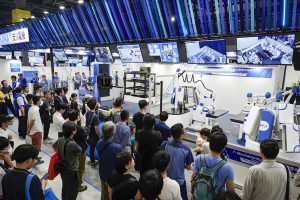
Yaskawa Electric proposes “autonomous distributed manufacturing.”
One of the highlights of the event was the emphasis on “autonomous” technology, which is critical to automating currently non-automated processes. Autonomous robots, which can make situational decisions on their own, enable robots to be used even in low-volume, high-mix production environments that were previously considered difficult to automate.
Yaskawa Electric presented its “autonomous distributed manufacturing” concept. Its demonstration system, designed for assembling electric vehicle batteries, featured robots that autonomously assembled battery modules and covers to produce three types of batteries. “This exhibit demonstrates the feasibility of introducing such autonomous robotic systems on a small scale. We want to show potential users that ‘this is something we could use’,” said a representative from the Robotics Division. They also displayed the new “MOTOMAN NEXT Series” industrial robot, which is capable of autonomous operation.
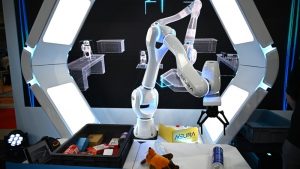
MAiRA at Idaka’s booth can learn operating instructions through conversation.
Idaka (Nagoya City, Naka Ward, President Kenji Takada) exhibited the AI-equipped collaborative robot “MAiRA” from Germany’s NEURA ROBOTICS. This robot requires no teaching; once set up with delivery instructions, it independently decides the order and route for transporting items. It supports multiple languages, including English and German, and can follow simple instructions through conversational interaction. “Our goal was to showcase cutting-edge technology that attracts young people. Many small and medium-sized enterprises (SMEs) still lack personnel capable of handling robots, but MAiRA is easy to operate even in such environments,” said a representative.
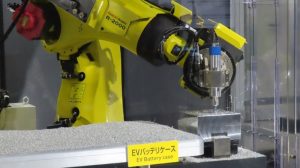
Fanuc’s robot demonstrated aluminum machining and attracted attention.
Fanuc, one of the companies with the largest booths at the venue, displayed numerous robot systems. They offered a wide range of applications with several collaborative robots, as well as conventional industrial robots.
One highlight was the robotic machining system, which featured a robotic arm equipped with a rotating tool for machining aluminum parts modeled after electric vehicle battery cases. They also demonstrated a laser machining system that synchronizes laser and robot control for precise machining. “Fanuc’s robot systems can achieve high-precision machining,” said Kenichiro Abe, Senior Managing Officer.
On July 4, the first day of the event, eight companies including TRI Engineering (Nagoya City, Moriyama Ward, President Seiji Katayama) and Iwata Tool (Nagoya City, Moriyama Ward, President Masanao Iwata) launched the “Robot Machining Technology Symposium“. They held a press conference in an attached conference room to announce the association’s goals and future initiatives. “We hope that various companies and researchers will join us in contributing to the formation of the robot machining system market,” said Takeharu Oka, vice president of TRI Engineering.
In manufacturing sites, plastic cases known as “returnable containers” are widely used for transporting parts and products. Given the concentration of manufacturing industries in Aichi Prefecture, robot systems for preparing these containers also attracted attention.
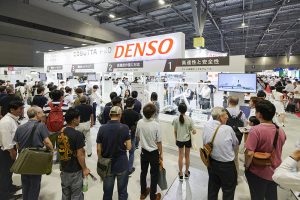
DENSO WAVE automates the preparation of returnable containers.
DENSO WAVE (Agui Town, Aichi Prefecture, President & CEO Takayoshi Sagara) demonstrated a robot system that inserts “kanban” (product management cards) into returnable containers. Their robot hand, which is in the process of being patented, handles various tasks from transporting returnable containers to replacing kanban cards and placing upper lids, all of which are performed by the “COBOTTA PRO” collaborative robot. “Automation in shipping operations is still underdeveloped. We aim to approach these areas with automation proposals such as those shown in this demo,” said a representative.
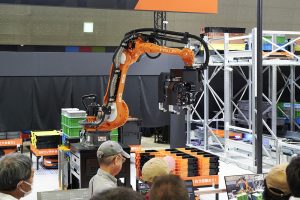
Mujin’s system now supports two-color containers.
Mujin (Koto Ward, Tokyo, CEO Issei Takino) proposed factory logistics automation, drawing attention with Japan’s first pallet-based automated storage system. Their robot arm system for stacking returnable containers also attracted interest. Mujin’s system, which has been shown at other exhibitions, this time supports two-color containers and semi-transparent containers with lids, thanks to a new 2D vision system that captures color information in addition to the existing 3D vision system. Mujin’s controller, the “Mujin Controller,” manages all these elements, including robot arms and automated guided vehicles (AGVs).
Many companies exhibited devices for transportation automation, responding to the growing need to automate tasks such as transportation amid a severe labor shortage.
Yamaha Motor exhibited an automation system with a linear transport system. “Many companies are developing linear transport systems, but Yamaha Motor is a pioneer in this field and holds the leading share in the domestic market. Our extensive track record supports our reliability,” said a sales planning representative from the Robotics Division. They displayed a “three-row horizontal circulation structure” system that allows defective products to be reworked without stopping the production line.
For outdoor transportation between buildings, they introduced the autonomous driving electric vehicle produced by eve autonomy (Iwata City, Shizuoka Prefecture, CEO Ryosuke Hoshino), a joint venture between Yamaha Motor and Tier IV, a company strong in autonomous driving technology.
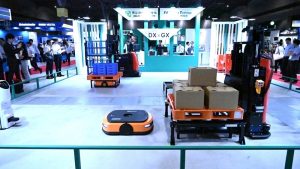
Okaya & Co. proposed AGV and AGF combined systems.
Okaya & Co. exhibited logistics automation systems combining AGVs and automated guided forklifts (AGFs). They demonstrated an AGF equipped with a 3D camera that recognizes the shape of iron pallets for precise stacking. “The systems we showcased today address the ‘2024 problem’ in logistics and labor shortages. They can automate not only within warehouses, but also between processes in production lines,” said a representative from the New Business Promotion Department, Mechatronics Division, Nagoya Head Office.
Throughout the exhibition, various companies displayed a range of robots and automation equipment. The next RTJ is scheduled for early summer 2026.
RTJ Reporting Team
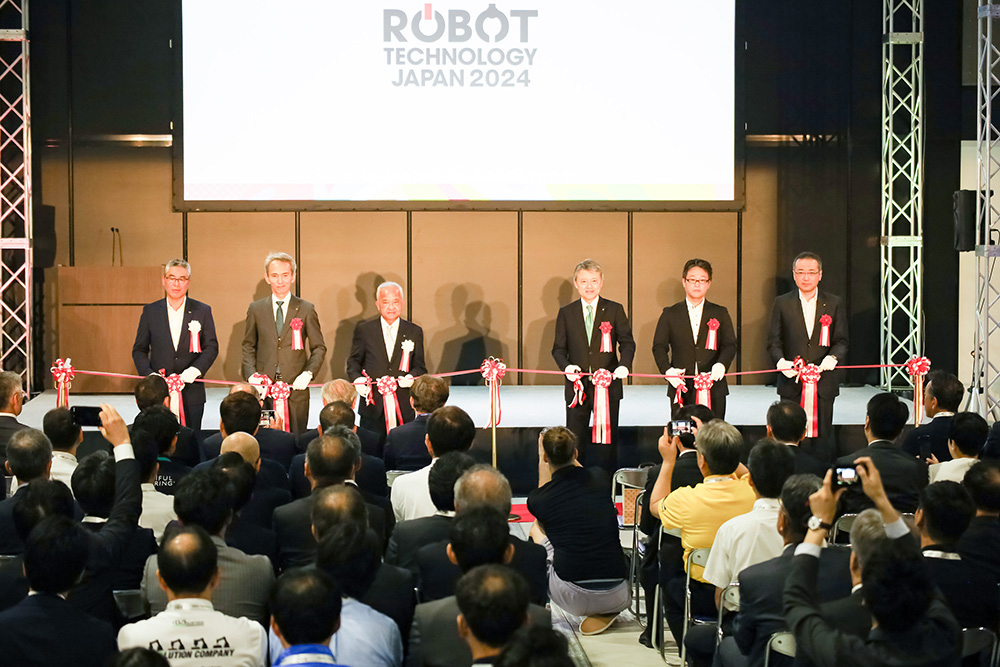
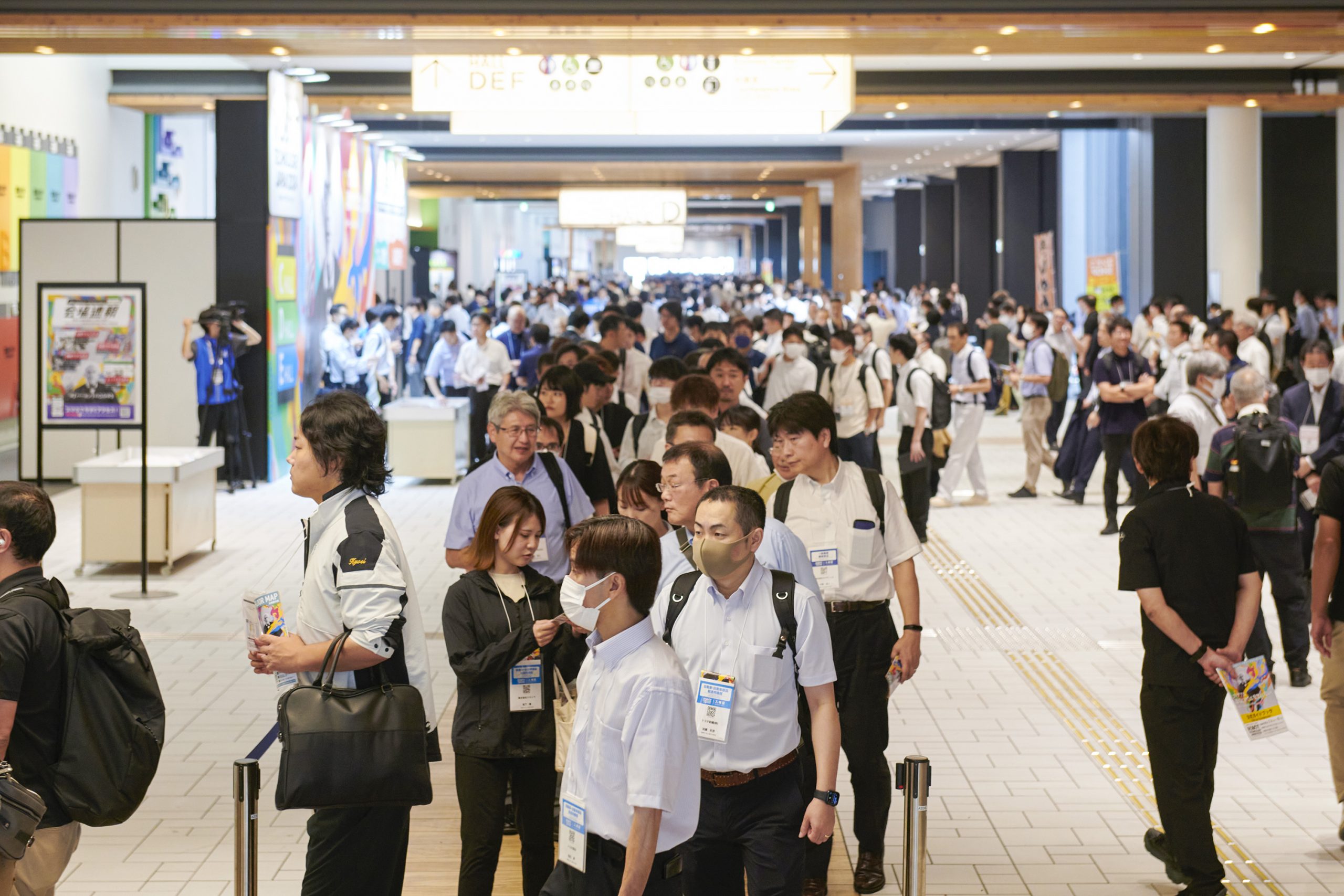
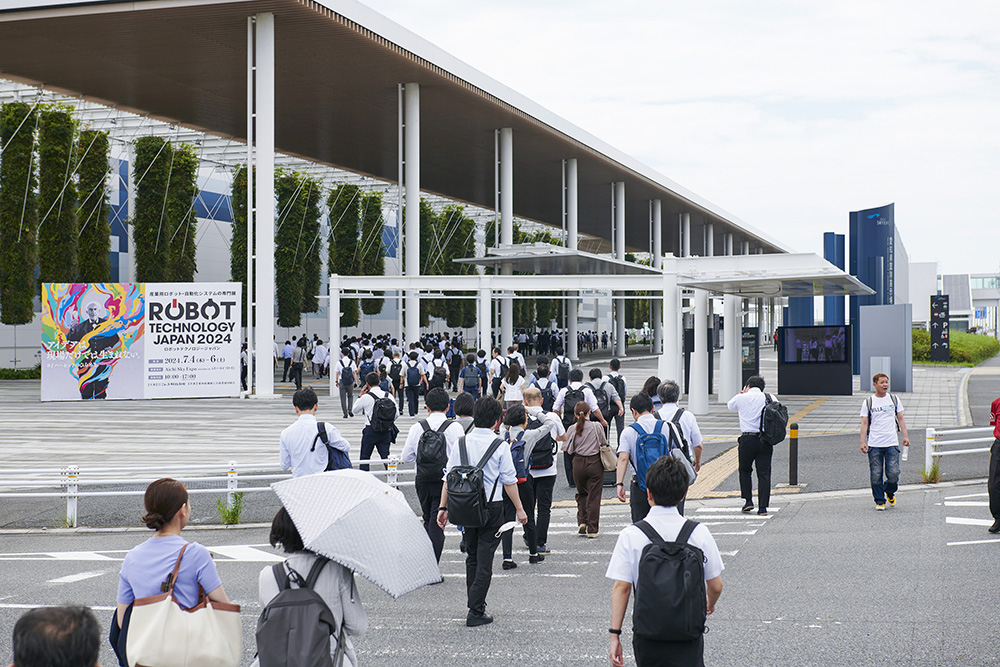
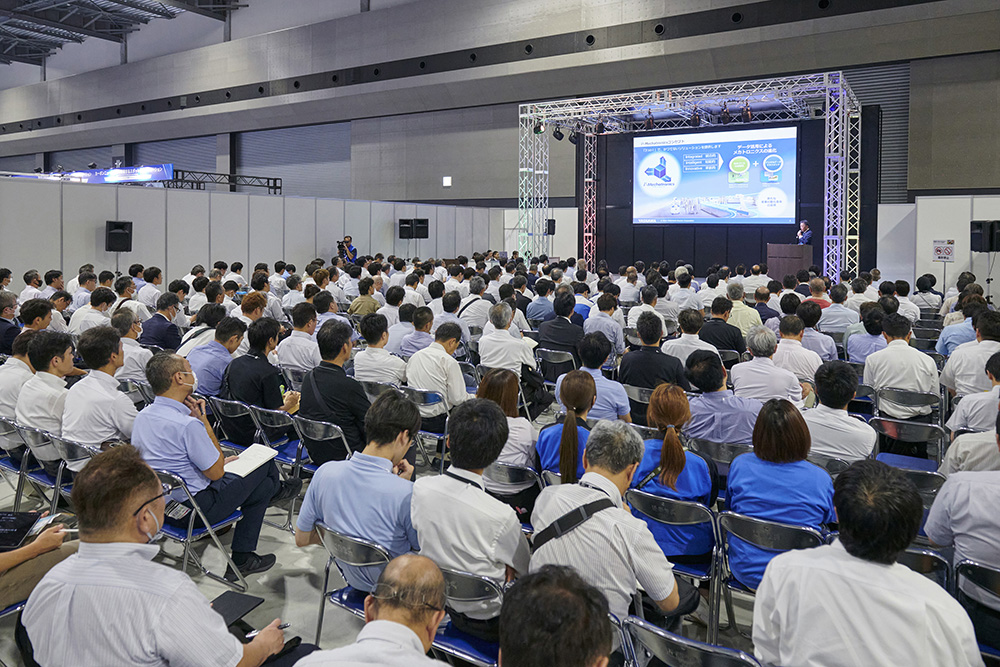
July 11, 2024
July 2, 2024
March 29, 2024
December 26, 2025